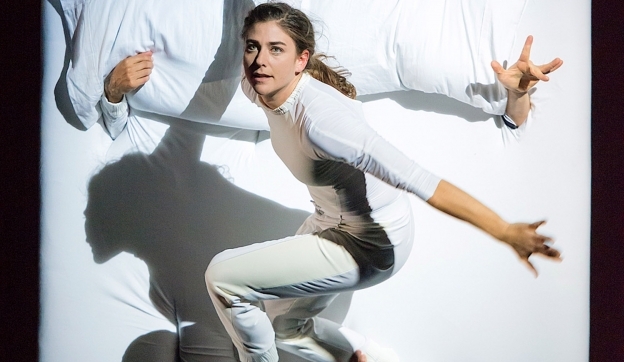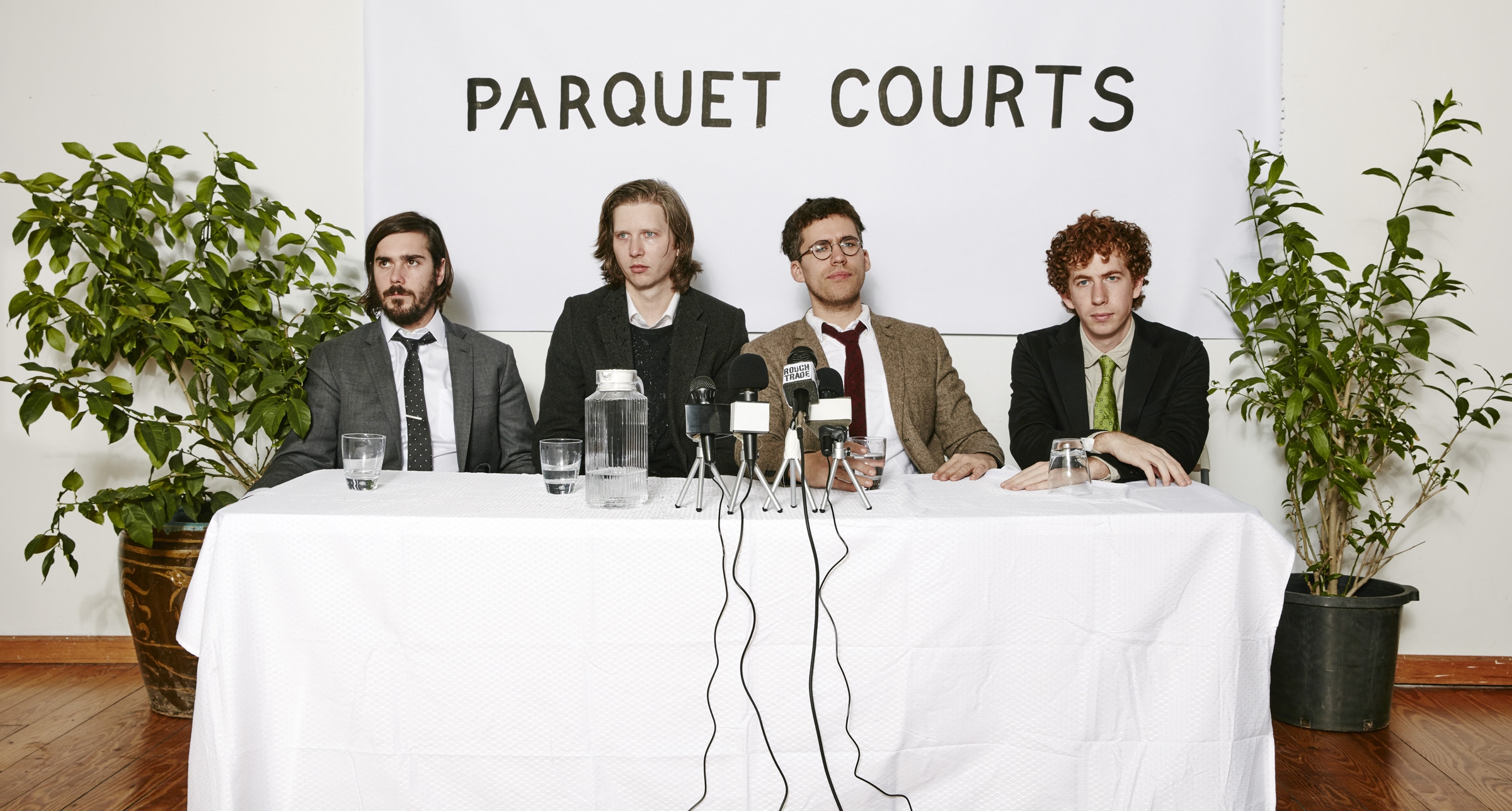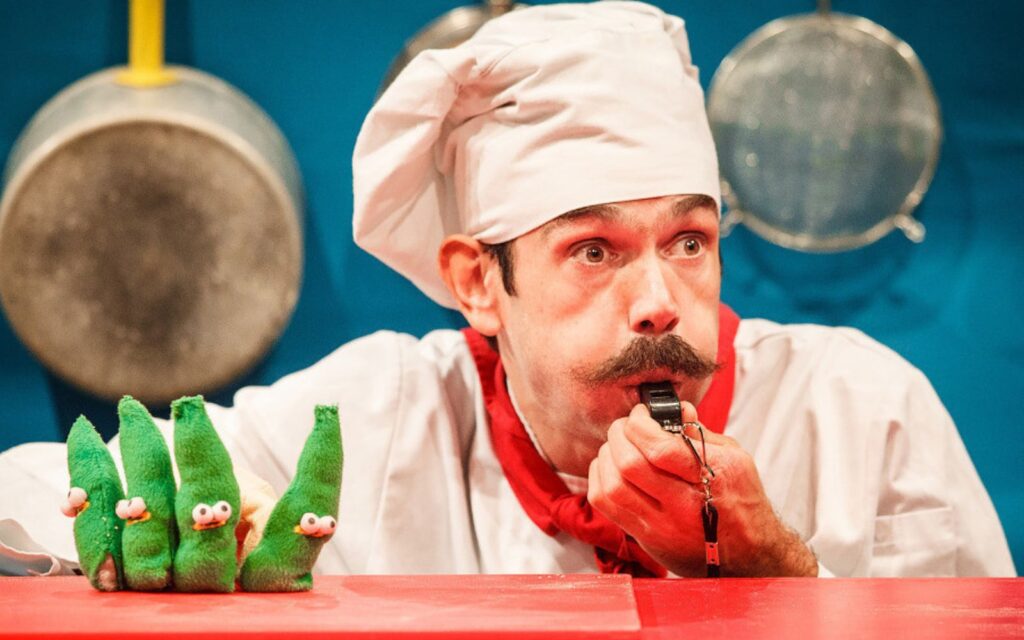Despite the absence of red noses or any other circus trope, Triptyque is no less a spectacle. Canadian outfit Les 7 Doigts (The Seven Fingers) has worked with choreographers for each of Triptyque’s three acts to infuse circus with dance and nudge both disciplines right to the edge.
The first act, Anne and Samuel, starts with performer Sarah Harton tied up and suspended at odd angles. The two performers engage in feats of balance and beauty on crutches, interspersed with movements resembling rictus or spasticity (begging a question about using able-bodied performers to mimic disability). In flesh coloured costumes, hunched and using pointy crutches as fore limbs, the pair resemble mating praying mantis.
The second act, Variations, starts with a quick scene that could have been slapstick: a bloke wearing a button-up jacket appears to be minding the other performer who’s pushing a broom around the stage. However, as the movements of the sweeper became increasingly erratic, it’s more akin to watching the proverbial man in a white coat observing a psych patient.
The balance of the act dispenses with gravity as six performers balance on their hands with as much ease and grace as if on their feet.
The final act, Nocturnes, was the surrealist icing on the cake and also the most disturbing. A woman lies watching TV on a hospital bed (query again whether it’s in a psych ward), while a male orderly quite literally manipulates her by jerking invisible strings. The rest is a horror story: people are hiding under the bed, the bed becomes animate, hands emerge from the mattress to pin the patient to the bed, the patient’s costume is open at the back (like a hospital gown) and swings open, and ropes with a whiff of noose about them drop from the ceiling.
Few words are spoken throughout the performance, but the lunatic logic and landscape of each piece is so clear they’d be redundant. The 20-minute interval between each act is welcome – the audience as well as the performers need to catch breath. This is circus, but not as we know it.
By Meg Crawford







